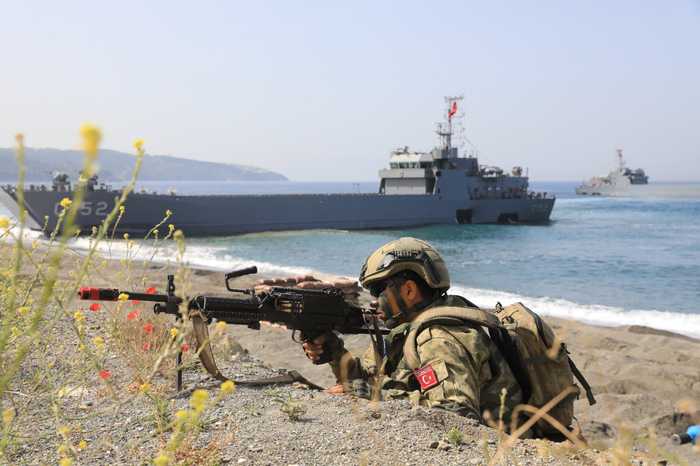Published 06:39 IST, June 8th 2024
The drill showcased advancements in unmanned surface vessel (USV) technology, featuring six Albatros-S USVs designed by Aselsan.
Advertisement
Marmaris, Turkey: The Turkish Naval Forces recently concluded a significant naval exercise in the Mediterranean Sea, showcasing their advancements in unmanned surface vessel (USV) technology. The exercise, dubbed Denizkurdu-II, involved a comprehensive array of naval assets, including ships, submarines, and aircraft. Running from May 7 to May 18, the drill also saw active participation from the Turkish Air Forces, emphasizing the joint operational capabilities of Turkey’s military forces.
The exercise featured six Albatros-S USVs, designed and manufactured by the Turkish defence company Aselsan. These platforms are notable for their compact design, measuring 7.2 meters in length and 2 meters in width, with a displacement of 2,200 kilograms. The diesel engines of the Albatros-S can propel the vessel at speeds exceeding 40 knots, and it is capable of carrying a 200-kilogram warhead. Additionally, the TCB 1101, the first USV commissioned by the Turkish Navy, was part of the exercise. The Marlin platform, developed in collaboration with Aselsan and Sefine Shipyard, has previously participated in NATO exercises such as REPMUS and Dynamic Messenger in 2022 off the coast of Portugal.
Advertisement
Technological Integration Enhancing Naval Warfare Tactics
The Marlin USV measures 15 meters in length and 3.85 meters in width, with a displacement of 21 tons. It is equipped with advanced electronic warfare systems, including the Ares 2N electronic support measures system and the Ares 2NC electronic countermeasures systems, as well as the Stamp remote-controlled weapon station, all produced by Aselsan. These USVs were controlled remotely from both land-based and shipborne control centres, demonstrating their versatility and operational flexibility.

Retired Rear Admiral Cem Okyay emphasized the strategic advantages offered by USVs in modern naval warfare. "The unmanned surface vessels provide the navy with a robust defence against asymmetric threats," Okyay told Defense News. "They enhance our capabilities in anti-surface warfare, anti-submarine warfare, and electromagnetic warfare missions, and are also effective in mine countermeasure operations. Furthermore, they offer additional means for reconnaissance, surveillance, and intelligence gathering."
Advertisement
Comprehensive Naval and Aerial Participation
Denizkurdu-II was not limited to unmanned systems. The exercise involved an impressive fleet of 94 crewed ships of various types, alongside eight submarines. In the air, the Turkish forces deployed 10 maritime patrol planes, 16 helicopters, 28 unmanned combat aerial vehicles, 26 fighter aircraft, one airborne warning and control system aircraft, one A400M cargo plane, and one target-towing plane. This extensive participation highlights Turkey's commitment to maintaining a versatile and capable naval force.
The successful execution of Denizkurdu-II underscores Turkey's strategic emphasis on integrating advanced unmanned systems into its naval operations. The exercise showcased the operational readiness of the Turkish Naval Forces and their ability to conduct complex missions involving a mix of manned and unmanned platforms. The inclusion of cutting-edge technologies like USVs reflects a broader trend in modern naval warfare, where unmanned systems play an increasingly critical role in enhancing maritime security and operational effectiveness.
Advertisement
06:39 IST, June 8th 2024